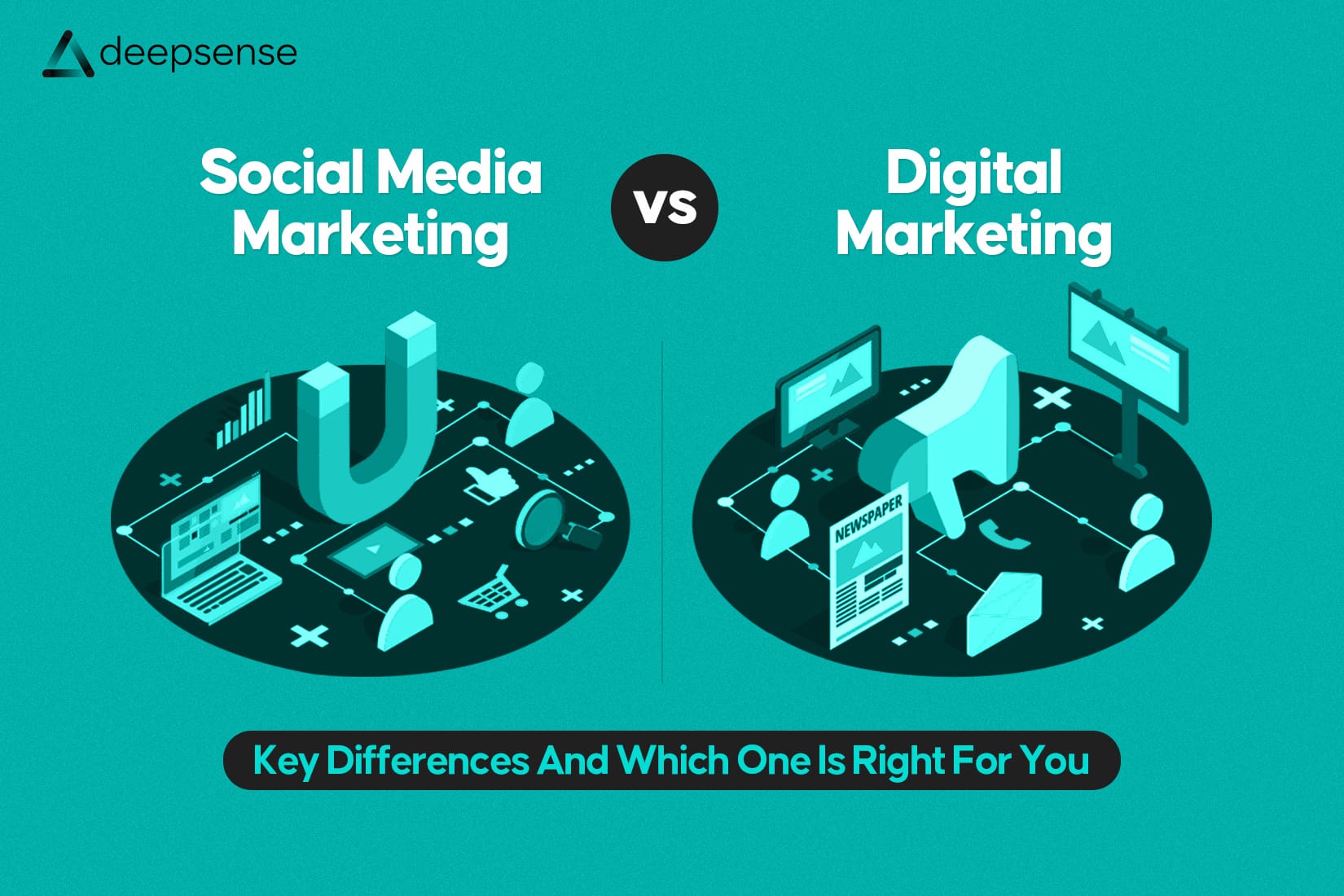Maximizing ROI with Social Media Marketing: A Complete Guide
Social media in business isn’t just about likes and shares anymore, it’s a serious business tool that can drive real revenue when done right. But let’s be honest, just having an account on Facebook, Instagram, LinkedIn, or Twitter won’t magically grow your business. The real question is: How do you turn social media efforts into actual profits? That’s where maximizing your return on investment (ROI) comes in.
This guide will walk you through the smartest ways to get more engagement, conversions, and revenue from your social media marketing strategies. Let’s dive in!
1. Set Clear Goals (No More Shooting in the Dark)
Before you even start posting, get your goals straight. Ask yourself, what do you want from social media marketing? More traffic? Brand awareness? Leads? Sales?
A good way to stay on track is using the SMART framework (Specific, Measurable, Achievable, Relevant, and Time-bound). Example: Instead of just saying, “We want more engagement,” set a goal like: “Increase Instagram engagement by 20% in the next 3 months.”
2. Choose the Right Platforms (Because Not All Are Equal)
Not every social media platform works for every business. You need to be where your audience is. . Here’s a cheat sheet:
- Facebook → Best for community building, B2C marketing, and paid ads.
- Instagram → Perfect for brands that are highly visual and want to attract younger audiences.
- LinkedIn → Ideal for B2B businesses, networking, and thought leadership.
- Twitter → Great for real-time updates, customer service, and engagement.
- TikTok → If you’re targeting Gen Z and want to create viral content.
- YouTube → Essential for video-heavy content and educational material.
3. Create High-Impact Content (Because Boring Won’t Work)
Content is king, but engaging content is the emperor. People scroll fast, so your content needs to stop them in their tracks.
Here’s what works best:
- Short-form videos → Think Instagram Reels, TikToks, and YouTube Shorts.
- Infographics → Bite-sized, visually appealing info.
- Live Streams → Instant audience engagement.
- User-Generated Content (UGC) → Showcasing customer testimonials, reviews, and real-life product use.
- Stories & Polls → Quick, interactive content that drives engagement.
4. Use Paid Advertising (Because Organic Reach Isn’t Enough)
With declining organic reach, paid ads are your best friend. Here’s how to get the most bang for your buck:
- Targeted Ads → Use audience segmentation to reach the right people.
- Retargeting → Show ads to people who’ve already interacted with your brand.
- A/B Testing → Test different ad formats, copy, and CTAs to see what works best.
- Lookalike Audiences → Find new people similar to your best customers.
5. Track Your Metrics (Numbers Don’t Lie)
If you’re not tracking your data, you’re flying blind. Here are the key metrics that matter:
- Engagement Rate → Likes, comments, shares, and saves.
- Click-Through Rate (CTR) → Percentage of users who clicked on your link.
- Conversion Rate → Users who took a desired action (purchase, sign-up, etc.).
- Customer Acquisition Cost (CAC) → The cost of acquiring a new customer.
- Return on Ad Spend (ROAS) → How much revenue you get compared to what you spend.
Use tools like Google Analytics, Facebook Insights, Instagram Analytics, and LinkedIn Analytics to keep track.
6. Post at the Right Time (Timing Is Everything)
You can have amazing content, but if you’re posting when no one’s online—it’s a waste. Here are the best times to post (in general, but always check your own analytics!):
- Facebook & Instagram → 11 AM – 1 PM, 7 PM – 9 PM (weekdays)
- LinkedIn → 7 AM – 9 AM, 5 PM – 7 PM (Tuesdays & Thursdays)
- Twitter → 12 PM – 3 PM (weekdays)
- TikTok → 6 PM – 10 PM (weekends work best)
Pro tip: Use scheduling tools like Hootsuite, Buffer, or Sprout Social to automate your posts.
7. Engage with Your Audience (It’s a Two-Way Street)
Social media isn’t a megaphone, it’s a conversation. Here’s how to keep your audience engaged:
- Respond to comments and messages (quickly!).
- Ask questions and use polls to start discussions.
- Host live Q&A sessions to boost interaction.
- Share user-generated content to build credibility.
8. Work with Influencers (But Choose Wisely)
Influencer marketing can skyrocket your reach, if you do it right. Instead of only looking at follower count, focus on engagement levels.
Micro-influencers (10K–100K followers) often have higher engagement rates and more trust with their audience than mega-influencers. Track their performance metrics (engagement, click-through rates, and conversions) to measure success.
9. Leverage Social Commerce (Because People Want to Buy Instantly)
Why send people away from social media to shop when they can buy directly on the platform?
- Use Instagram Shop, Facebook Marketplace, and TikTok Shop.
- Add shoppable posts and product tags.
- Run exclusive social media promos to boost sales.
10. Test, Optimize, Repeat (Because Trends Change)
Social media evolves fast, and what worked yesterday may not work tomorrow. Stay ahead by:
- Analyzing top-performing content and doubling down.
- Reallocating ad budgets based on ROI.
- Experimenting with new formats and trends.
Final Thoughts
Maximizing ROI on social media isn’t about posting and hoping for the best. It’s about having a smart, data-driven strategy.
To recap:
- Set clear goals
- Choose the right platforms
- Create engaging content
- Invest in paid ads
- Track your metrics
- Post at optimal times
- Engage actively
- Work with influencers
- Use social commerce
- Test and refine constantly
Social media success comes from strategy, consistency, and adaptability. Keep learning, keep testing, and watch your ROI soar!
FAQs
1. What is the 50/30/20 rule for social media?
The 50/30/20 rule is a content strategy guideline that helps brands maintain a balanced social media presence:
- 50% Value-Driven Content – This includes educational, entertaining, or informative posts that engage your audience without being salesy. (e.g., tips, industry insights, user-generated content)
- 30% Promotional Content – Posts that promote your products or services, special offers, or brand announcements.
- 20% Curated Content – Sharing relevant content from other sources, including industry news, partnerships, and user-generated content.
This approach ensures that your content is engaging and not overly promotional, helping to build trust and engagement with your audience.
2. How to measure ROI for social media marketing?
To measure ROI (Return on Investment) for social media marketing, follow these steps:
- Define Your Goals – Determine if you’re tracking sales, lead generation, brand awareness, or engagement.
- Track Key Metrics – Common KPIs include: Engagement rate (likes, shares, comments) Website traffic from social media
- Conversion rate (sign-ups, purchases)
- Customer acquisition cost (CAC)
- Use Tracking Tools – Google Analytics, Meta Business Suite, LinkedIn Analytics, and UTM tracking can help you measure impact.
- Calculate ROI – Use the ROI formula (explained below) to assess profitability.
3. What is a good ROI in social media?
A good ROI depends on industry benchmarks, business goals, and campaign objectives. On average:
- For paid social media advertising – A 3:1 ROI (300%) is considered strong, meaning for every $1 spent, you generate $3 in revenue.
- For organic social media – ROI is typically measured in engagement, brand awareness, and lead generation rather than direct revenue.
Your ROI should align with business objectives—whether it’s driving sales, increasing brand reach, or building customer loyalty.











